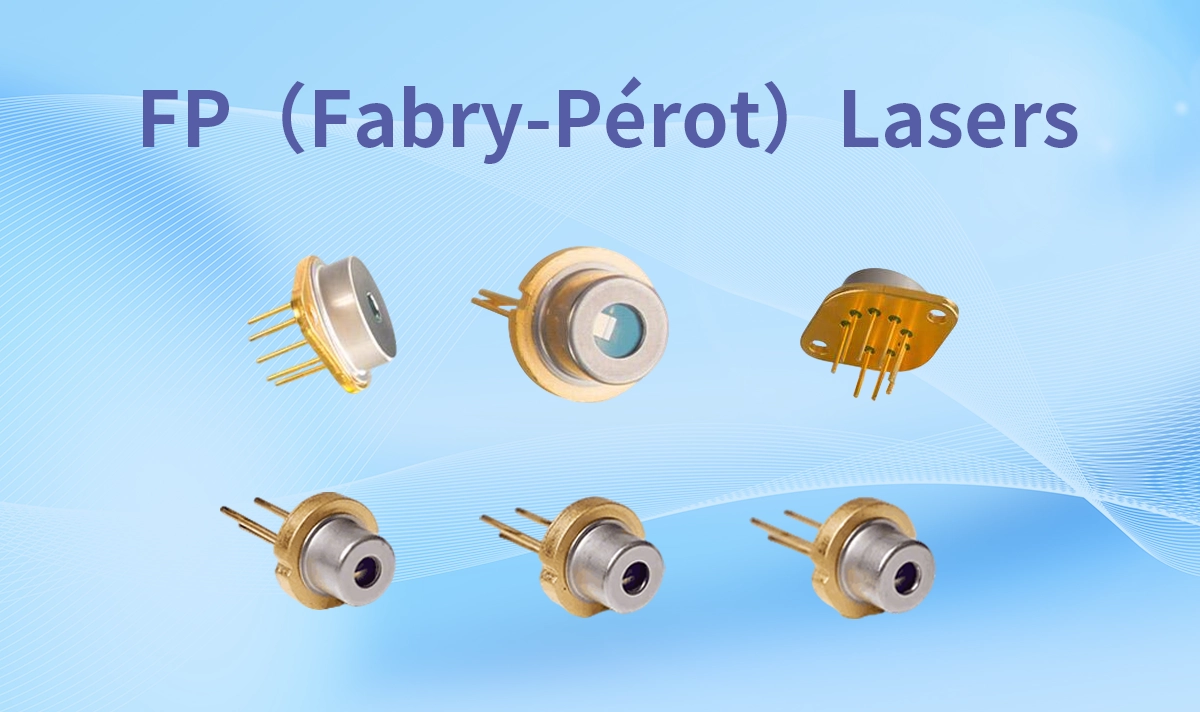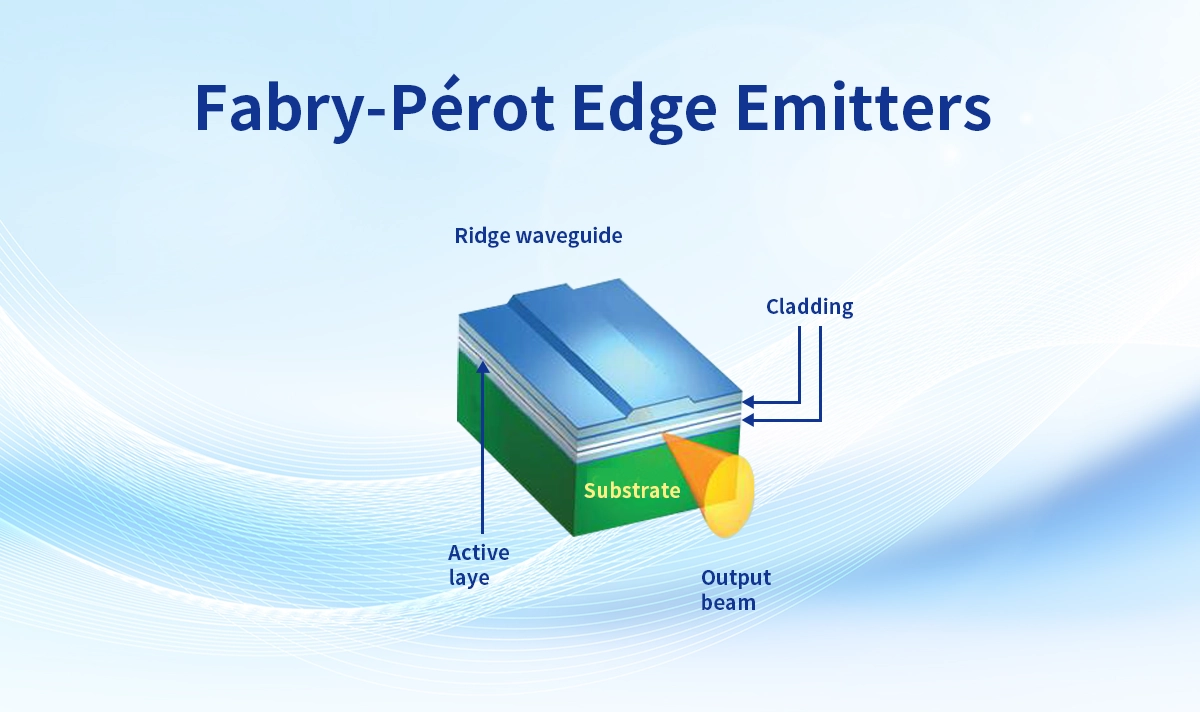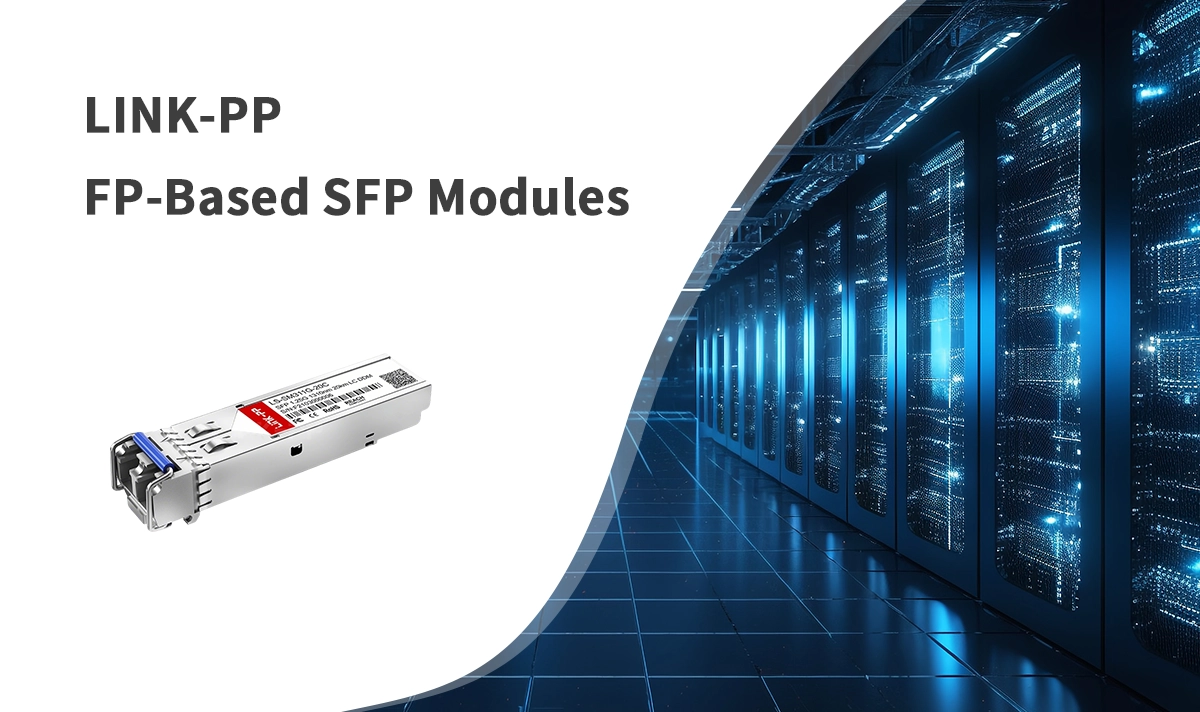
1. Introduction
A Fabry‑Perot (FP) laser is a common, cost‑efficient light source used within optical transceiver modules, particularly SFP modules. In this post, we’ll explain how FP lasers work, their technical characteristics, and their typical applications, with reference to LINK‑PP’s offerings on their official store.
2. What Is an FP Laser?
An FP laser diode uses a Fabry‑Perot resonant cavity formed by two parallel, partially reflective mirrors that sandwich the gain medium. Light reflects multiple times between these mirrors and builds up through stimulated emission, emitting light at discrete longitudinal modes determined by the cavity length and refractive index.
These lasers often produce multiple longitudinal modes and are simpler in design than single‑mode alternatives like DFB lasers.
3. Technical Characteristics

Key specifications of FP lasers include:
Multi-mode spectrum: FP lasers typically emit multiple longitudinal modes, resulting in broader spectral widths, often several nanometers wide. Their cavity is formed by cleaved facets with reflective coatings, which support multiple resonant frequencies within the gain bandwidth.
Wavelengths: Commonly available in 850 nm (for multimode) and 1310/1550 nm (for single-mode fiber), though single-mode operation is not stable and can be disrupted by temperature or current variations.
Power and speed: Output power typically ranges from a few milliwatts up to hundreds of milliwatts. FP lasers support data rates up to 1.25 Gbps, with some specialized modules reaching 2.5–4 Gbps, although this is less common.
Stability and spectral behavior: Due to mode hopping and spectral broadening, FP lasers exhibit reduced wavelength stability under temperature or current changes. This makes them less suitable for applications requiring narrow linewidth or high stability.
Cost and complexity: Their simple structure allows for low-cost manufacturing, making FP lasers well-suited for short- to medium-range, budget-sensitive optical modules.
4. Typical Applications
Low‑rate links: FP lasers are popular in SFP modules used for up to around 20 km at 1.25 G.
Occasional extended reach: Some manufacturers push FP lasers for 40 km transmission, but this requires higher output power and can accelerate component aging.
Testing and calibration: Stabilized FP sources are used in test equipment for general optical loss and power measurements.
5. Why Choose LINK‑PP FP-Based SFP Modules?

LINK‑PP’s FP-based SFP modules offer a cost-effective solution for reliable optical communication, especially in short to mid-range applications. A prime example is the LS‑SM311G‑20C, which combines performance and affordability to support a wide range of networking needs.
This module features a 1310nm FP laser and PIN photodetector, enabling 1.25Gbps data transmission over distances up to 20km on single-mode fiber (SMF). It supports hot-pluggable SFP footprint, complies with SFP MSA and SFF‑8472 standards, and integrates real-time digital diagnostic monitoring (DDM). Operating from 0°C to +70°C, and powered by a single +3.3V supply, it’s ideal for both enterprise and telecom-grade deployments.
With RoHS compliance and LC duplex interface, the LS‑SM311G‑20C demonstrates LINK‑PP’s commitment to delivering practical, high-quality, and easy-to-integrate optical solutions.
6. Summary Table
Property | FP Laser Diode |
|---|---|
Cavity Type | Multi‑mode Fabry‑Perot resonator |
Spectral Width | Relatively broad (several nm) |
Data Rate | Typically up to 1.25 G (occasionally 4 G) |
Transmission Distance | Usually ≤ 20 km; occasionally up to 40 km |
Cost & Complexity | Low cost, simple design |
7. Final Thoughts
FP (Fabry‑Perot) laser diodes are dependable, cost‑effective workhorses in optical modules. Their technical simplicity and suitability for short‑distance applications make them a smart choice for entry‑level or cost‑focused deployment. LINK‑PP’s inclusion of FP‑laser modules in their SFP line demonstrates a commitment to providing a complete spectrum of optical tools—from economical to high‑performance options.


